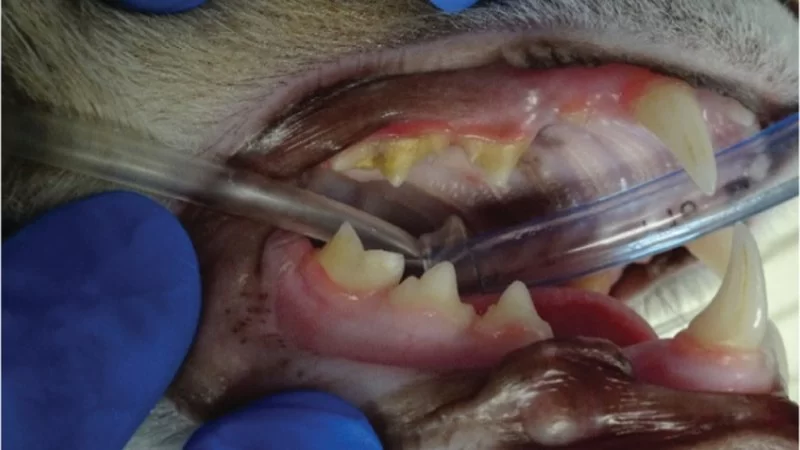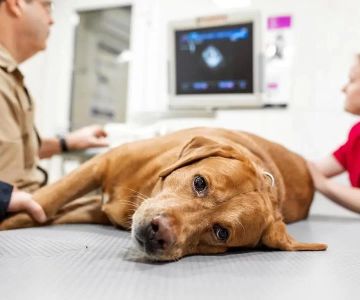How to Recognize and Treat Pet Feline Oral Disease
As a cat owner, it is essential to understand the signs of oral disease in cats. Feline oral diseases are more common than many pet owners realize, and they can cause significant discomfort and health problems for your furry companion. Early recognition and treatment are crucial for ensuring your cat’s overall health and well-being. In this article, we will discuss how to recognize the signs of feline oral disease and the best treatment options available.

715 Cape Coral Pkwy W, Cape Coral, FL 33914, USA
See Details1. Understanding Feline Oral Disease
Feline oral disease is a broad term that includes a variety of conditions affecting a cat's teeth, gums, and mouth. The most common oral issues in cats are gingivitis, periodontitis, tooth resorption, and feline stomatitis. Each of these conditions can cause pain, difficulty eating, and other health problems if left untreated.
1.1. Gingivitis and Periodontitis
Gingivitis is an inflammation of the gums, often caused by plaque buildup. If left untreated, it can develop into periodontitis, a more severe condition that affects the tissues around the teeth, leading to tooth loss. Symptoms of gingivitis include red or swollen gums, bad breath, and reluctance to eat.
1.2. Tooth Resorption
Tooth resorption is a painful condition where a cat’s teeth begin to break down and dissolve. It typically affects the molars and premolars, causing severe discomfort. Cats with tooth resorption may show signs of drooling, pawing at their mouths, or difficulty chewing hard food.
1.3. Feline Stomatitis
Feline stomatitis is a severe inflammatory condition of the mouth that can affect both the soft tissues and the gums. It is often caused by an overreaction of the immune system to plaque and bacteria. Cats with stomatitis may exhibit symptoms such as excessive drooling, bad breath, and difficulty eating. In severe cases, stomatitis can result in the loss of teeth.
2. Recognizing the Symptoms of Oral Disease in Cats
Recognizing the symptoms of feline oral disease early can help you take the necessary steps to prevent further complications. Some common signs that your cat may be suffering from oral disease include:
2.1. Bad Breath (Halitosis)
Bad breath is one of the most common symptoms of oral disease in cats. If your cat’s breath smells foul or sour, it could be a sign of plaque buildup, gingivitis, or tooth infection.
2.2. Difficulty Eating or Chewing
If your cat has trouble chewing food or seems to be avoiding hard foods, it could be due to pain from a tooth or gum issue. Cats with oral disease often favor soft food or eat less than usual due to discomfort.
2.3. Drooling or Excessive Salivation
Excessive drooling can be a clear indication of pain or discomfort in the mouth. If your cat is drooling more than usual or if the drool has an unusual odor, it’s worth consulting your veterinarian.
2.4. Pawing at the Mouth or Face
Cats that are suffering from oral pain may frequently paw at their mouths or faces in an attempt to relieve discomfort. This behavior is often accompanied by reluctance to eat or drink.
2.5. Swollen or Bleeding Gums
Red or swollen gums are a common sign of gingivitis or periodontitis. If you notice that your cat’s gums are bleeding, it may indicate an infection or advanced stage of oral disease.
3. Treatment Options for Feline Oral Disease
If you suspect your cat has an oral disease, it's essential to visit a veterinarian for a proper diagnosis. Depending on the severity of the condition, treatment options may include:
3.1. Professional Dental Cleaning
One of the most effective treatments for feline oral disease is professional dental cleaning. This procedure removes plaque and tartar buildup from the teeth, which can help reverse the early stages of gingivitis and prevent the progression of periodontitis. Your cat may need to be sedated for this procedure, as it requires thorough cleaning under the gums and around the teeth.
3.2. Tooth Extractions
In cases of severe tooth resorption or advanced periodontitis, tooth extraction may be necessary. While this may sound daunting, it can help alleviate your cat’s pain and prevent further infection. Your veterinarian will discuss the best course of action for your pet's specific needs.
3.3. Medications and Pain Relief
If your cat is diagnosed with stomatitis or another painful condition, your veterinarian may prescribe medications to reduce inflammation and manage pain. Anti-inflammatory drugs and antibiotics may be used to treat infections or to help manage chronic conditions.
3.4. Diet and Oral Care
In addition to medical treatments, a special diet or oral care routine may be recommended to help maintain your cat’s oral health. Dental diets are formulated to help reduce plaque buildup, and there are also dental treats and toys that can assist in cleaning your cat’s teeth.
3.5. Regular Vet Check-Ups
Regular vet visits are essential for catching oral diseases early. Your vet will examine your cat's teeth and gums during each check-up, looking for signs of plaque buildup, infection, or other oral health issues. Early intervention can prevent the need for more extensive treatments later on.
4. Preventing Oral Disease in Cats
Prevention is always better than treatment, and there are several steps you can take to keep your cat’s mouth healthy:
4.1. Brush Your Cat’s Teeth Regularly
Just like humans, cats benefit from regular tooth brushing. Using a cat-specific toothbrush and toothpaste, brush your cat's teeth at least a few times a week to remove plaque and prevent gum disease.
4.2. Provide Dental Toys and Treats
Dental toys and treats are designed to help reduce plaque and tartar buildup. These products can help keep your cat's teeth clean between professional cleanings, and they often come in flavors that cats enjoy.
4.3. Feed a Healthy Diet
A healthy diet can play a significant role in your cat’s overall health, including their oral health. Avoid feeding your cat sugary or overly processed foods, and consider incorporating dry food that can help scrape plaque off the teeth.
5. Conclusion
Oral disease is a common but preventable health issue for cats. By being vigilant about recognizing the signs, seeking prompt treatment, and maintaining a regular oral care routine, you can help your cat avoid painful conditions that affect their teeth and gums. If you notice any symptoms of oral disease in your cat, be sure to consult your veterinarian for a proper diagnosis and treatment plan. For more information on keeping your cat healthy, visit Hidden Brook Veterinary for expert advice and resources.











